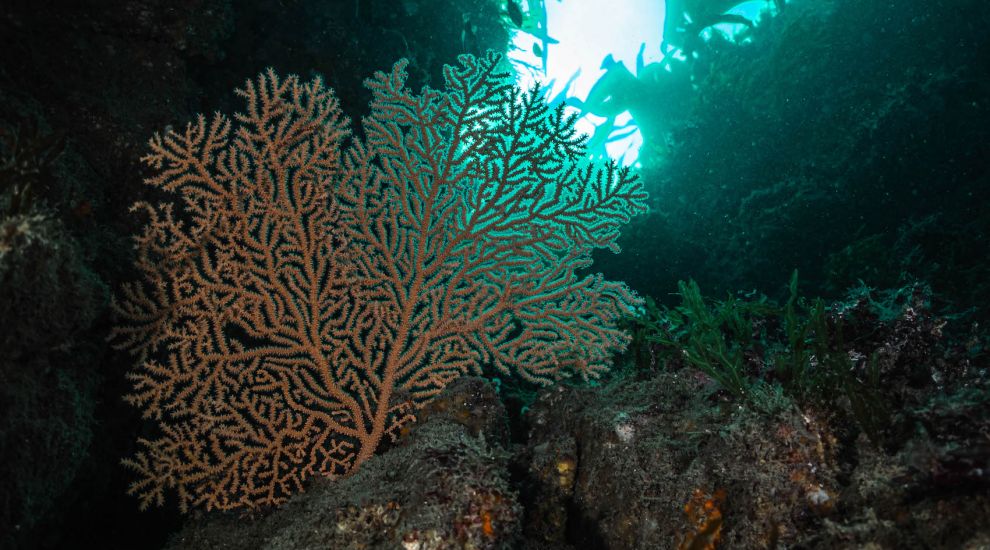


A local conservationist has shared the secrets of a diverse underwater world situated 20 miles from Jersey’s coast and revealed his favourite reef discoveries, including an ancient coral sea fan that was a metre-and-a-half high...
Recent research has found that Les Sauvage Reef is rich in marine life and plays a crucial role in Jersey's marine ecosystem – underscoring the need to protect key reef sites while raising awareness of their importance.
The reef is located between the Minquiers and Chaussey, and 'Sauvage' translates to 'wild' in French, reflecting the nature of the strong currents at the reef.
Previously overlooked, it was only in 2015 that divers from Jersey Marine Conservation and SeaSearch, led by conservationist Kevin McElwee, began exploring and gathering data from the reef.
Video: A diver recording the dimensions and health of a 15-year-old pink sea fan, surrounded by sea squirts, sponges and bryozoans. (Blue Marine Foundation)
In 2021 and 2022, the Blue Marine Foundation and the Environment Department also joined the investigation.
Their collective work has produced a report to increase awareness of the reef's geology, habitats, and species.
The team have suggested that the reef might contain prehistoric archaeological sites under the water.
Mr McElwee said: "We've got remnants of the time when all of that area was covered with ice, not water."
The research also brought to light unique geological formations, including submerged cliffs, gullies, and caves.
These formations create a habitat supporting over 80 species, including rare and protected corals like sunset cup corals and pink sea fans.
Video: Boulder field at the base of the reef sheltering pink sea fans and yellow stag horn sponges from the strong current. (Blue Marine Foundation)
The ecosystem is a feeding ground for various marine animals, including dolphins and seals.
"All of these creatures, from the bottom to the top of the food chain, are using that area to feed, survive, and breed," said Mr McElwee.
Despite its ecological significance, similar to other protected areas like Les Minques but with an even greater abundance of species, Les Sauvages currently lacks protection and faces threats from fishing practices like potting and dredging.
Mr McElwee explained: "When a dredger goes over [the seabed], it's like breaking a piece of chalk... that whole network for these minute creatures has been completely destroyed."
Video: A 'craggy' landscape with shorter brown and red weeds and sponges, with a cuttlefish hunting for crabs and juvenile fish hiding in the weeds and rocks. (Blue Marine Foundation)
Fishing gear like ropes, lines, and nets from lobster pots can also harm fragile species like sponges and corals.
In response to these findings, the Government is considering establishing a 'No Take Zone' around the reef to protect its biodiversity, a measure similar to one implemented in Portelet Bay in 2022.
This would ban removing marine species or using fishing boats within the zone.
Video: Kelp Park on the Sauvage plateau, which is very popular with fish like wrasse and pollack. (Blue Marine Foundation)
Mr McElwee explained: “Our marine areas need to be protected if we're going to ensure that species survive long term, but getting people to support, understand, and protect it is far more effective."
In line with this, the local conservationist holds educational talks and school visits to teach about Jersey's marine life and the importance of conservation.
Express sat down with Kevin McIlwee to chat about his marine research and favourite finds at the reef, including an ancient coral sea fan that was a metre and a half high...
Pictured top: A pink sea fan, also known as a "gorgonian" coral. (Blue Marine Foundation)
Comments
Comments on this story express the views of the commentator only, not Bailiwick Publishing. We are unable to guarantee the accuracy of any of those comments.